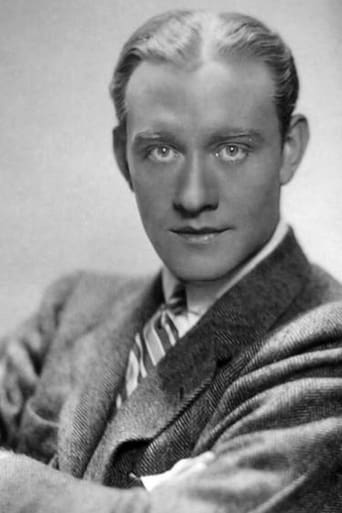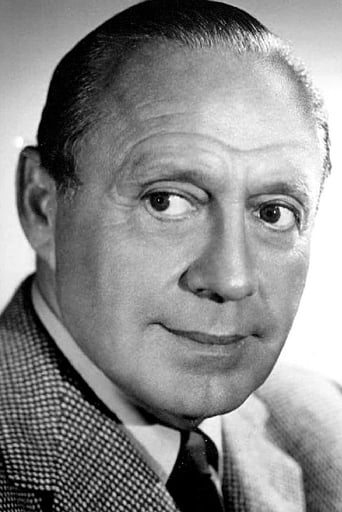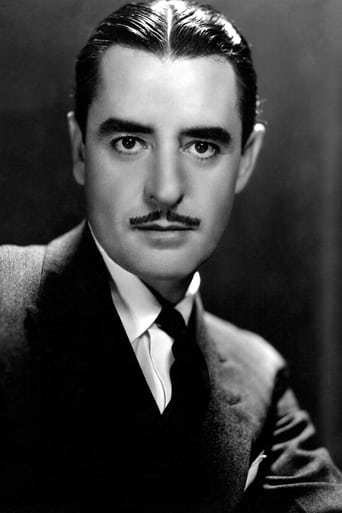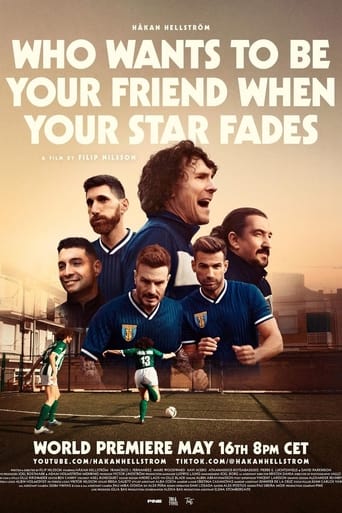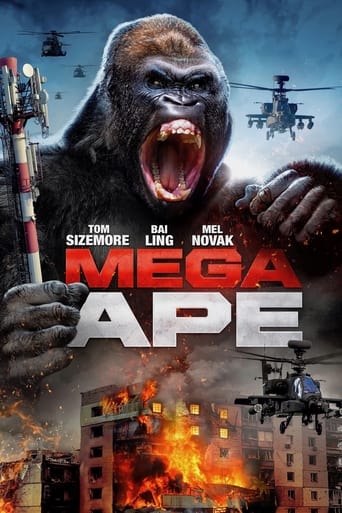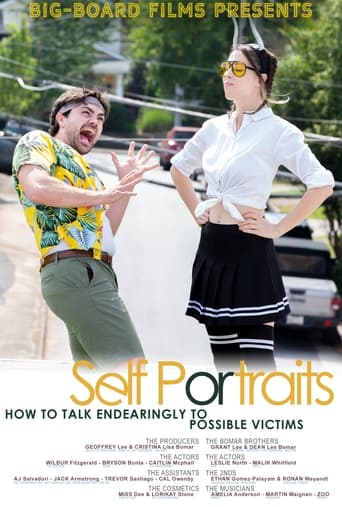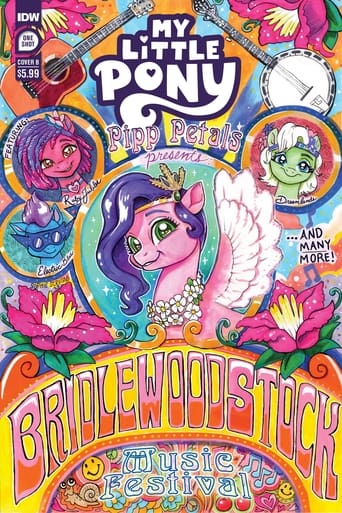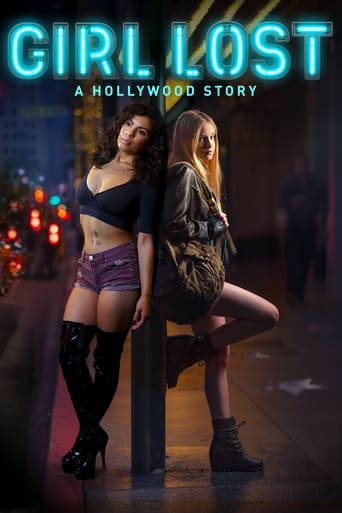

The Hollywood Revue of 1929 (1929)
An all-star revue featuring MGM contract players.
Watch Trailer
Cast
Similar titles
Reviews
Good films always raise compelling questions, whether the format is fiction or documentary fact.
A movie that not only functions as a solid scarefest but a razor-sharp satire.
By the time the dramatic fireworks start popping off, each one feels earned.
A terrific literary drama and character piece that shows how the process of creating art can be seen differently by those doing it and those looking at it from the outside.
This is one of those Dated, Corny, and Cringe-Inducers that Film Buff's, usually Reluctantly, sit through to say They have and add another Notch to the Belt, a much Deserved Reward for making it through the Two-Hour Running Time.Sure there are Some Folks who are Fans of the "Old School" Movie Stars and devour this Stuff and think its a Gay and Glorious Movie full of Wonderful Tunes and Dance Numbers.However, even Film Fanatics who Love Movies in Any Era, from the Silents to Today can discover that some Serious Time Displacement and an Extra Effort is Required to Tuff These Things Out.This is Considered the First of its Kind, there were many from Various Studios to Follow. A Big Box-Office Hit in the Day (no surprise) and was even Nominated for a Best Picture Oscar. Conrad Nagel is OK, and Jack Benny as the MC throughout the Show does the Same Overrated Schicht that He did His whole Career, which Isn't Much. But all of this is Relative, You see, because it's in the Eye of the Beholder.There are some Highlights that Attract Attention, some Not for the Right Reasons, like the Joan Crawford Hoofing and Marie Dressler Mugging away Dressed Up as a Little Girl, the Embarrassing Laurel and Hardy Skit, and there are many Other Good Performers not Shown in the Best Light.But others, like the "Lon Chaney's Gonna Get You If You Don't Watch Out" Bit, with some Truly Scary Masks and is a well Choreographed Skit.There is Buster Keaton in Drag, a Few Color Sequences, one Featuring John Barrymore as a Director who is Forced by the Studio to Update Shakespeare, and a "Singing in the Rain" Extended Finale and a few others that make it Worth a Watch.Note...Many other Hollywood Icons and now Forgotten Stars appear that are not mentioned here.Note 2...An important Time-Capsule no matter what You think of it.
I own this DVD and Gus Edwards is my great great uncle whoever did the description and redid the description need to watch the show . Gus Edwards produced almost all the music in the show.He was also in several of the acts in the show as well.When you watch the closing credits clear as day it says music by Gus Edwards! Is this some kind of a sick joke. BY not giving Gus Edwards the credit is a form of slander!The man has been dead since 1945 but shouldn't be correct?Before making statements and falsifying information maybe it wouldn't hurt to watch the show.I have a screen shot of the closing credits and as clear as day it says MUSIC BY GUS EDWARDS!!!!!why is this sight altering that ?I wish there was a way to upload onto this site!!!
This is a very odd little curio and despite my horribly low rating of 2, the film is strongly recommended for fans of the golden age of Hollywood. That's because despite being very bad and tedious, cinephiles will want to catch glimpses of some of their stars (such as Laurel and Hardy, Jack Benny, Joan Crawford and Buster Keaton) in very unusual roles.The film is a chance to show off the new invention of talking pictures. So instead of a normal plot, the film is a bizarre showcase so that fans can finally see their MGM favorites in talking and singing roles. Oddly, many non-singers sang some god-awful numbers in the film since the movie is more like a filmed version of a talent show than a traditional movie. You even get to see Jack Benny competently play the violin for the film. It ain't great but unlike his later persona, it wasn't at all bad. What was bad was when he sang, as was singing by Joan Crawford and a couple others. Part of the problem with the singing isn't because all the stars had bad singing voices (though some did), but because the sound technology was so bad. The singing sounds exceptionally tinny and with more modern equipment, they would have sounded so much better. In fact, having everyone perform on a stage like they would at a real talent show was chosen because Hollywood still hadn't figured out how to get the sound right.The reason I watched it was for Laurel and Hardy and Keaton. As for Stan and Ollie, they were only okay and were in way too little of the film. During the final giant production number, practically all the stars were there singing except the duo--which is odd, as Oliver Hardy had a very nice voice. Buster, on the other hand, was better simply because of his acrobatics. Seeing him so easily flip and fall was pretty amazing.Another odd curio in the film were the Two-color Technicolor sequences. The first was a clever way to present Romeo and Juliet to modern audiences with Norma Shearer and John Gilbert hopelessly miscast as teen lovers!! The other sequence was a huge song and dance number that looked like a Busby Berkeley routine--though he didn't begin his work in Hollywood for one more year. The color sequences shown on this Turner Classic Movies release, unfortunately, looked very muddy and ugly and desperately need further restoration. Most Two-color films look almost this bad (though Hollywood REVIEW had lots of scratches that should be removed), but this primitive color process actually isn't as ugly as most people think. I've seen some amazingly beautiful Two-color films that look amazing--such as 1929 re-release of PHANTOM OF THE OPERA and the short THE TOY SHOP. It CAN look great but significant restoration is needed.Overall, this is an interesting but amazingly dull and stagy film. The musical numbers are tedious or unintentionally funny and most of the non-singing numbers fall flat as well. Still, for a very, very unusual curio involving some of your favorite stars, I suggest you watch it and use your remote to speed through the more ponderous portions!Finally, if you do watch, look for the horribly offensive black-face number at the beginning and the song "Old Black Joe". They're a rather sad sign of the times. Also, the Marie Dressler song isn't too bad--the words are cute. There's an amazingly slinky and practically naked dance near the end that will catch some by surprise. And finally, despite the movie SINGING IN THE RAIN, you'll see this song in a much faster and snappier version of the song "Singing in the Rain" in this film.
The Hollywood Revue of 1929 is certainly a simple curiosity by now. When it was made, the world had just been taken by storm by talking pictures, a revolutionary concept. All of the studios were hesitant to make themselves over for sound, especially MGM who housed an amazing cast of silent stars. This film is a sort of stage show exhibiting the talents of many of the major talents under contract to MGM. Conrad Nagel is the master of ceremonies along with Jack Benny. Nagel also sings to Anita Paige in the show. Joan Crawford dances and sings, Cliff "Ukelele Ike" Edwards sings several times, William Haines bullies Benny, Bessie Love speaks a few songs, Marie Dressler does the same, Laurel and Hardy do a comic magic act, Marion Davies sings and dances, Buster Keaton does a comic dance, Norma Shearer and John Gilbert recite Romeo and Juliet, and Lionel Barrymore directs. The grand finale is the entire cast singing Singin' in the Rain in color.Everything is pretty primitive here. The camera is static, so much so that when the actors move it sometimes cuts off their heads. The sound synchronization is sometimes off too. The musical scenes feature bland routines by chorus girls in costumes with contrasting colors for visual affect. There is one overhead shot reminiscent of Busby Berkeley, though, who did not make his breakthrough 42nd Street until three years later.Many of these clips are available in other places. The Davies documentary that Milestone released includes her scene toward the end. Joan Crawford: The Ultimate Movie Star utilizes most of Crawford's song. The thirteen part Hollywood series shows the Romeo and Juliet scene with Shearer and Gilbert. When The Lion Roars shows the "Lon Chaney's Gonna Get You" song. Various other sources show the Singin in the Rain finale. However, this film does include many scenes that aren't available elsewhere due to the obscurity of the star.
